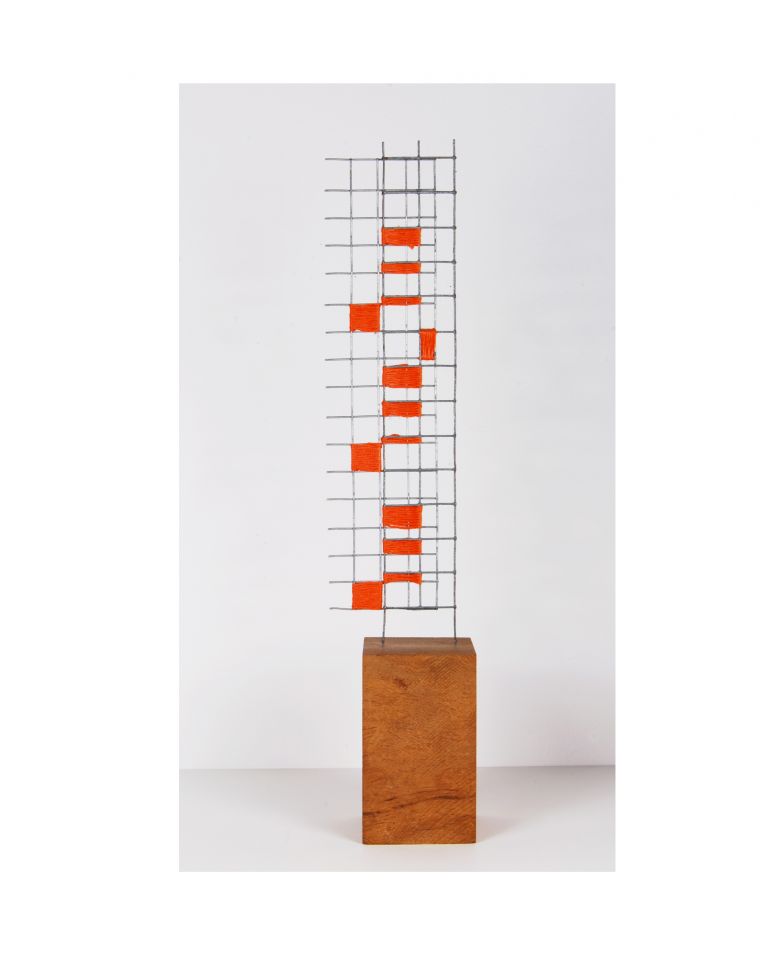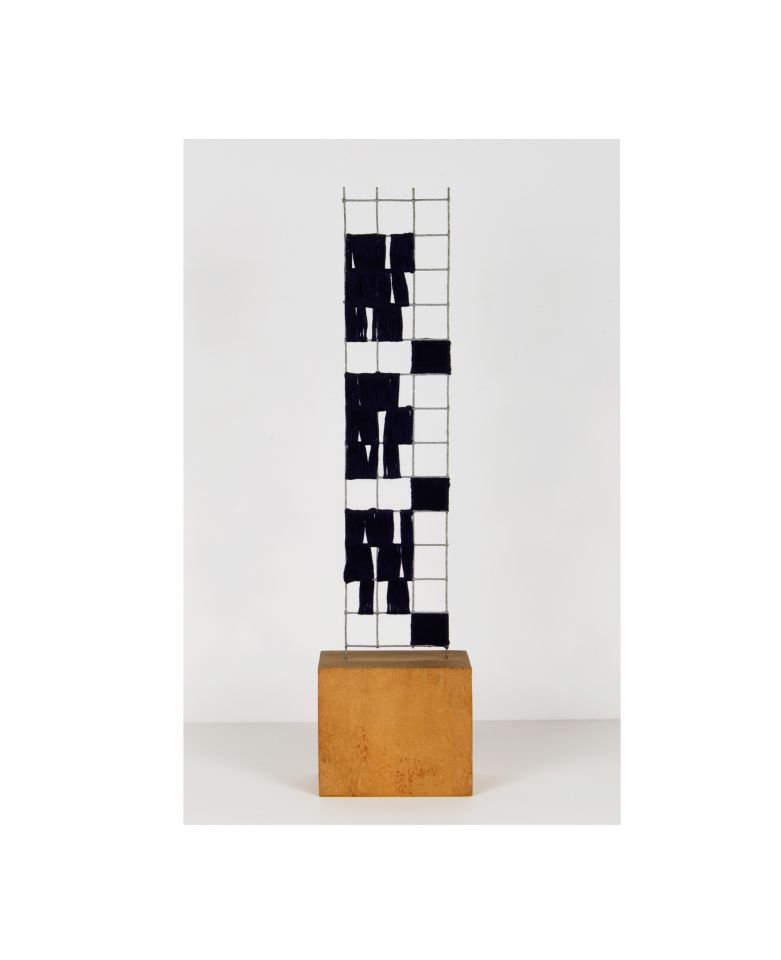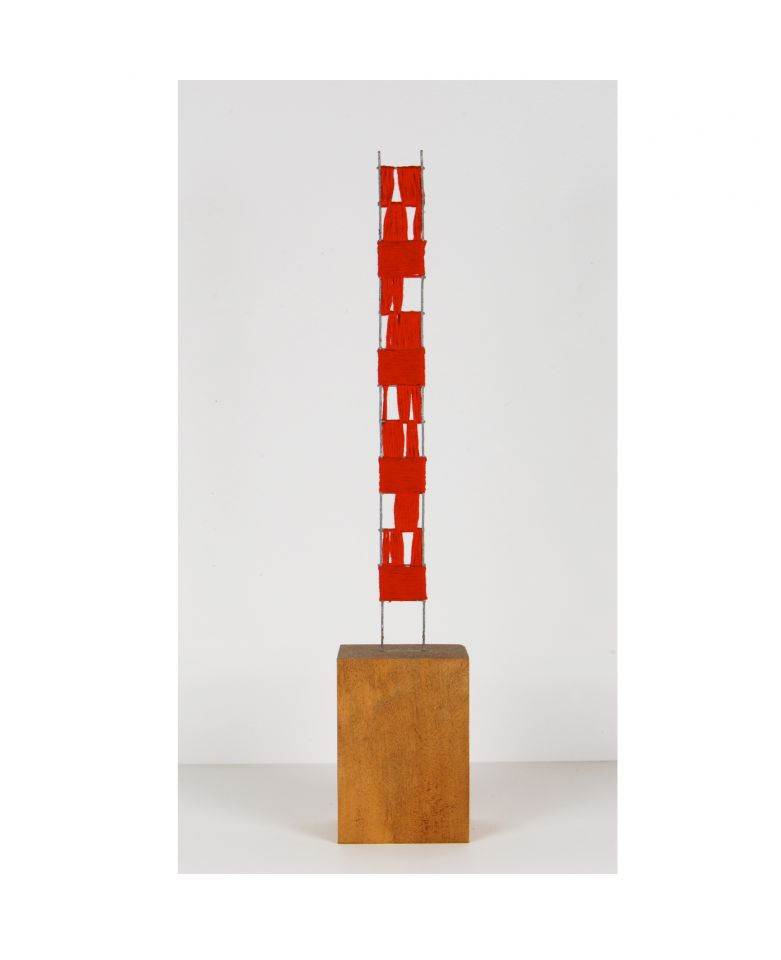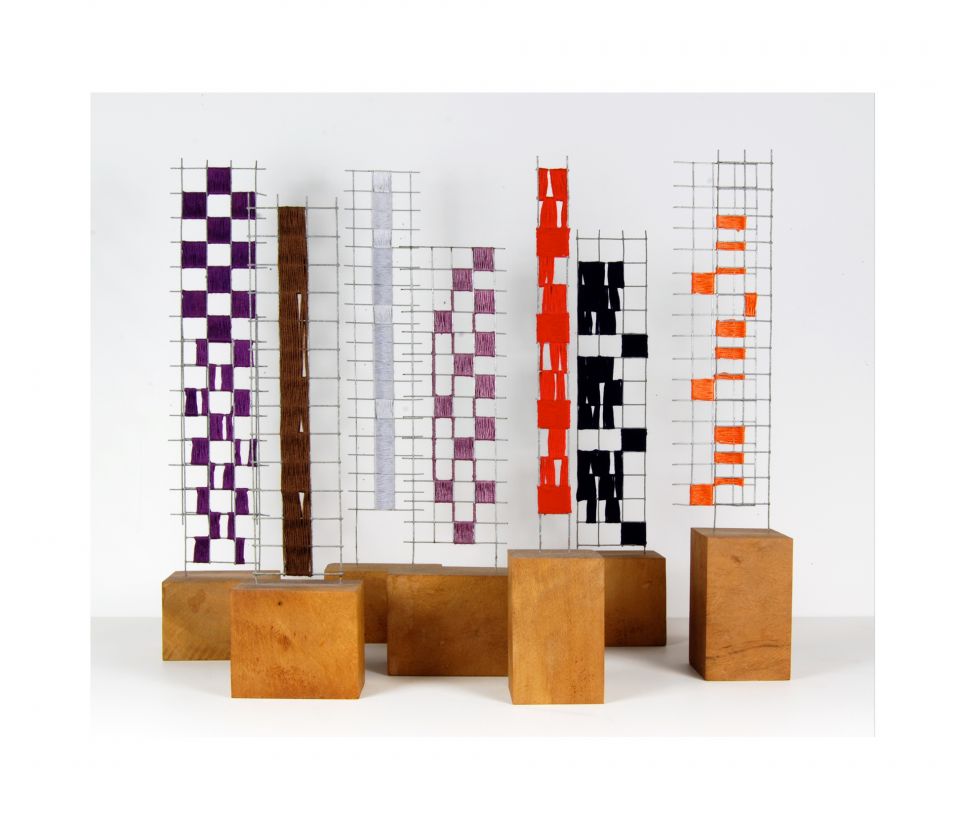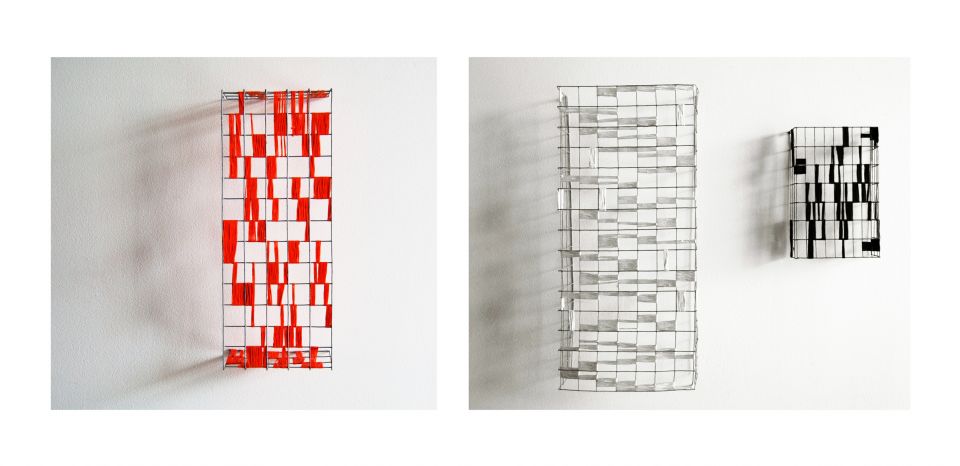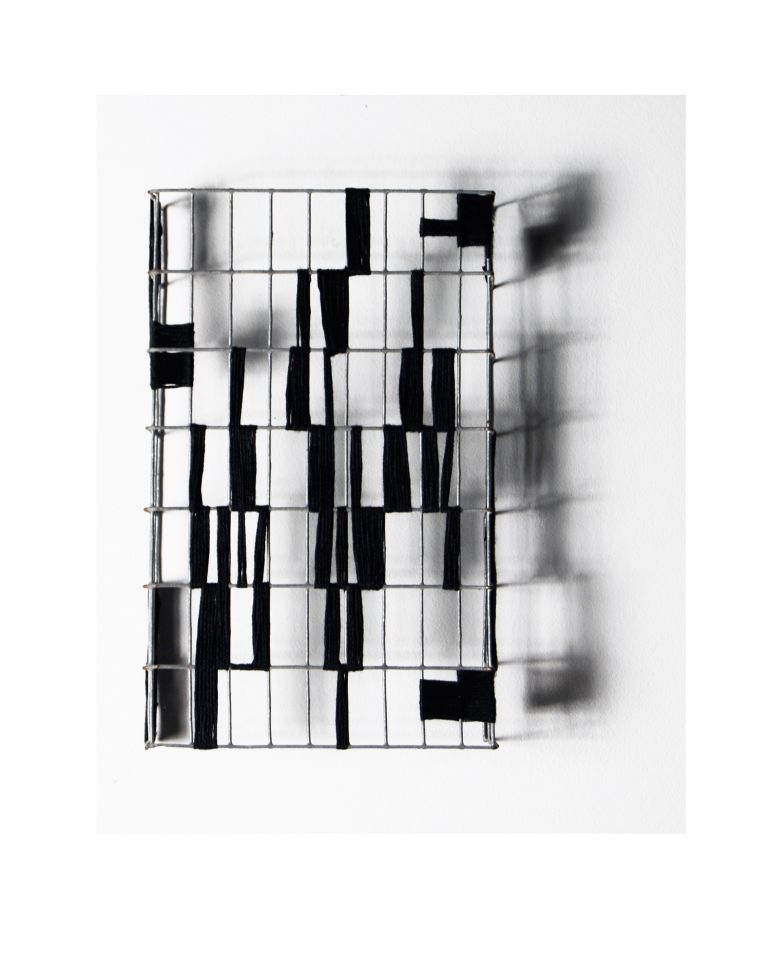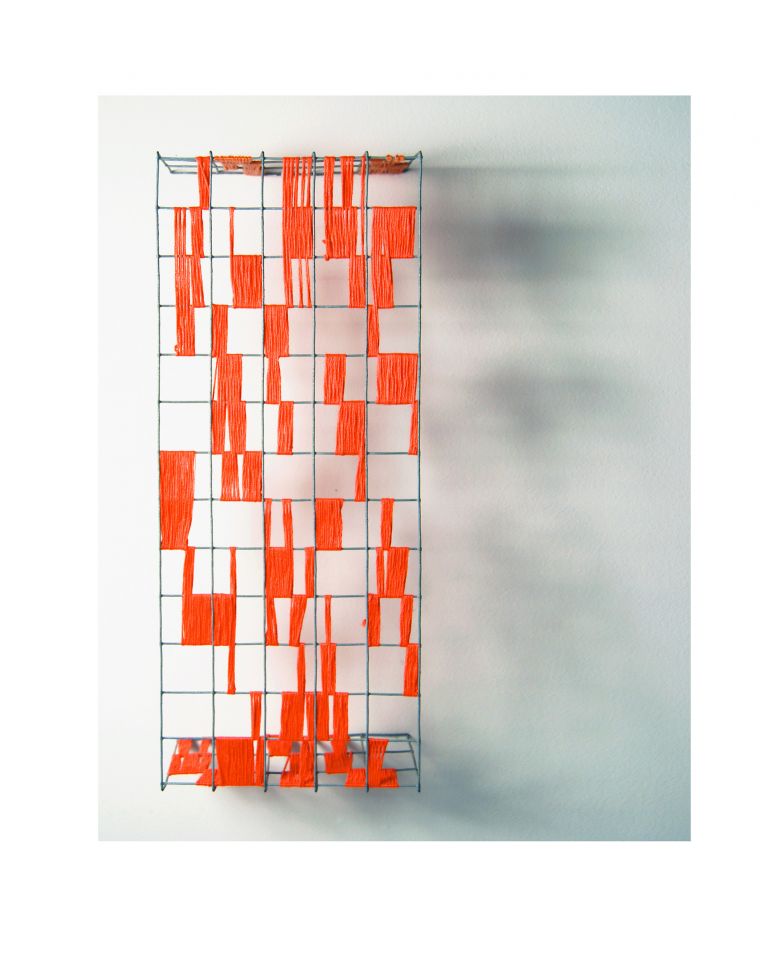projects
the architecture of form
essay by simeon kronenberg
I want there to be an awareness of not only the individual piece, but of the wall behind it and the surrounding architecture….of the space itself and the light and shadow. dana harris
Dana Harris studied Ikebana, the exacting Japanese art of flower arranging, in Tokyo in the early 1990’s. She pursued her studies at the Sogetsu school, the most avant garde in Japan. Here, she continued to develop and hone her particular sense of the architecture of form, where the play of light, shadow and texture is as significant as the overall design in space, which is itself determined within strict boundaries. Her recent sculptural work, using coloured thread woven on wire armatures and knitted floor plans pinned in space, owe much to the training she received in ikebana, where notions to do with classical balance and restraint are all-important.
Importantly, the study of Ikebana requires great sensitivity to tradition and the application of selective innovation, within clearly established parameters. The Ikebana artist must (paradoxically) work hard to disguise the effort in achieving a sense of ease, grace and naturalness. For the viewer, the delight in the object created is finally realized before the arrangement, in the very tension created between a recognized and idealized sculptural form and the way that this is guided and extended, through innovation, by the individual artist. A sensitive artist tests the very boundaries of the tradition itself. In essence, Ikebana is an exacting sculptural art, requiring the application of a deep sensitivity to the material and a delight in the play of light, shadow and the fundamentals of three dimensional design.
The New Zealand born, Australian artist, Rosalie Gascoigne, also used this Japanese art as the inspiration for constructed works utilizing found and simple objects, in uniquely Australian combinations. Her work fundamentally changed the way Australians regard the landscape. Dana Harris’ quest is no less poetic. Like Gascoigne, Harris draws on western, abstract modernist art practice, Piet Mondrian, Agnes Martin, Sean Scully and so on, as well as a defined and articulate Japanese sensibility.
Dana’s woven, constructed and knitted works require hours of exacting work. The processes are in themselves deeply repetitive and meditative and reflect something of the processes of Ikebana. By focusing her interest in Eastern traditions within a western context, Harris has developed an art practice that is both particular and synchronous. Indeed, it is testament to the breadth of her training and her determination that there is aesthetic coherence within apparent contradictions.
Dana Harris is concerned to distill the essence of form and to express this with restraint. By expressing itself reservedly and with idiosyncratic refinement, her work quietly invites the viewer to reflect and meditate.
The wirework project is a series of works that explore the use of the grid in weaving, revealing the simple architecture of the form- to create a hybrid between weaving and sculpture. Particular works are installed on small wood plinths, others on the wall or freestanding.
Reflecting on some of the principles I learnt from studying ikebana, I’m interested in how much I can achieve within the restrictions. They are an experiment in relationships- the rigidity of the steel grid, the organic cotton, the weaving and the cast shadows.
There is space within this work, for it to hold a void and a volume. The works interact with the environment, shifting transparency and shadows becoming more important elements, always changing throughout the day.
I’ve realised in my work, there is always simplicity and contradiction.
All works are three dimensional woven grid maquettes using a metal grid, cotton and rosewood bases created in 1999.
